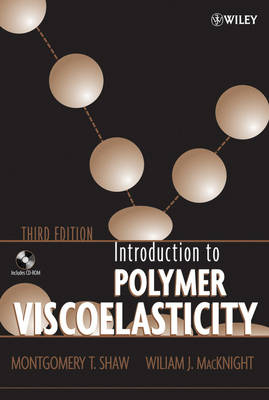A revised molecular approach to a classic on viscoelastic behavior
Because viscoelasticity affects the properties, appearance, processing, and performance of polymers such as rubber, plastic, and adhesives, a proper utilization of such polymers requires a clear understanding of viscoelastic behavior.
Now in its third edition, Introduction to Polymer Viscoelasticity remains a classic in the literature of molecular viscoelasticity, bridging the gap between primers on polymer science and advanced research-level monographs. Assuming a molecular, rather than a mechanical approach, the text provides a strong grounding in the fundamental concepts, detailed derivations, and particular attention to assumptions, simplifications, and limitations.
This Third Edition has been entirely revised and updated to reflect recent developments in the field. New chapters include:
Phenomenological Treatment of Viscoelasticity
Viscoelastic Models
Time-Temperature Correspondence
Transitions and Relaxation in Polymers
Elasticity of Rubbery Networks
Dielectric and NMR Methods
With detailed explanations, corresponding equations, and experimental methods, supported by real-life applications (as well as the inclusion of a CD-ROM with data to support the exercises), this Third Edition provides today's students and professionals with the tools they need to create polymers with more desirable qualities than ever.
- ISBN10 0471740454
- ISBN13 9780471740452
- Publish Date 26 August 2005 (first published 5 May 1983)
- Publish Status Active
- Out of Print 5 July 2021
- Publish Country GB
- Publisher John Wiley and Sons Ltd
- Imprint Wiley-Blackwell (an imprint of John Wiley & Sons Ltd)
- Edition 3rd Edition
- Format Hardcover
- Pages 336
- Language English
